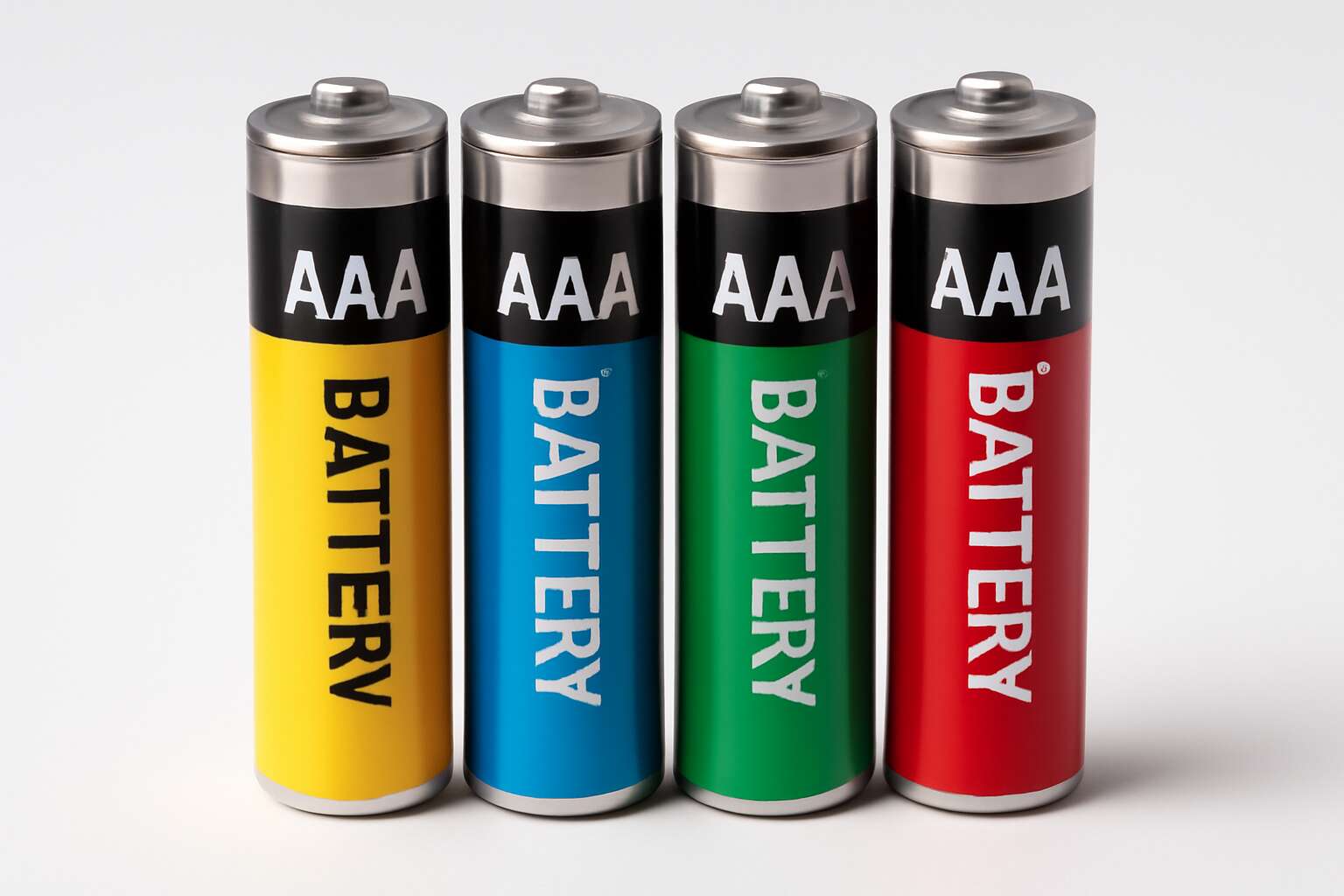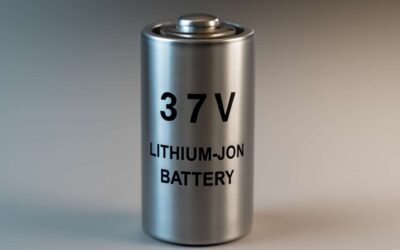Comprehensive Guide to AAA Batteries
Understanding AAA Batteries
AAA batteries may seem like humble power sources, but their significance in daily life is anything but trivial. With over 3 billion units sold annually worldwide, these tiny powerhouses are essential for countless devices—from remote controls to portable fans. Understanding the intricacies of AAA batteries reveals their vital role in maintaining our modern lifestyle. They are not just simple batteries; they embody a delicate balance of chemistry, design, and utility.
When exploring AAA batteries, it’s crucial to recognize the diversity within this category. Different types—alkaline, rechargeable nickel-metal hydride (NiMH), lithium—offer varying benefits, from longevity to environmental impact. For instance, rechargeable AAA batteries can reduce waste and offer a more sustainable energy solution. The choice of battery impacts device performance, lifespan, and overall user experience. In a world increasingly conscious of sustainability, understanding the nuanced differences in AAA batteries becomes more important than ever.
Key Features of AAA Batteries
AAA batteries, those tiny yet mighty power capsules, possess a captivating blend of features that make them indispensable in our modern world. Their compact size belies their remarkable energy density, enabling devices to operate seamlessly with minimal fuss. The key features of AAA batteries include consistent voltage output, typically around 1.5 volts, and a design optimized for efficiency and reliability. Whether alkaline, rechargeable NiMH, or lithium variants, each type offers unique advantages tailored to different needs.
Among the most compelling aspects of AAA batteries is their versatility. They energize everything from remote controls and clocks to miniature flashlights and sensors. Their lightweight nature makes them the perfect choice for portable gadgets, ensuring mobility without added bulk. The selection of AAA batteries often comes down to their chemistry, which influences lifespan, environmental impact, and performance.
- Alkaline AAA batteries offer long-lasting power for everyday devices.
- Rechargeable NiMH AAA batteries promote sustainability and reduce waste.
- Lithium AAA batteries excel in low-temperature environments and high-drain devices.
Understanding the key features of AAA batteries helps in choosing the right type for each application, ensuring devices operate at their peak while supporting a sustainable future. These unassuming batteries are, after all, small marvels of engineering—quietly powering the world with every click and beep!
Popular Uses of AAA Batteries
In the dim corridors of modern technology, AAA batteries serve as silent sentinels, breathing life into the smallest of devices with an almost mystical persistence. Their popularity in South Africa’s bustling markets is no coincidence—these unassuming power sources are the heartbeat of countless gadgets that keep our lives spinning. From remote controls to compact flashlights, the uses of AAA batteries are as diverse as the shadows that dance in twilight.
Among the most common applications are remote controls for televisions, where AAA batteries ensure seamless control over entertainment. Clocks, miniature sensors, and wireless mice also depend on this tiny yet vital power source. In fact, their versatility extends to emergency flashlights, where their reliability becomes a beacon of hope in dark times. Their lightweight and portable nature make them an essential component in our quest for convenience, especially in the unpredictable landscapes of South Africa.
- Remote controls for TVs and sound systems
- Wireless computer mice and keyboards
- Miniature flashlights and lanterns
- Clocks and weather sensors
Whether alkaline, rechargeable NiMH, or lithium variants, each type of AAA batteries offers a unique charm—like a secret kept within a shadowed chamber—powering our devices with unwavering loyalty and silent strength. In this dance of light and dark, AAA batteries remain an eternal testament to the understated power of simplicity in an increasingly complex world.
Choosing the Right AAA Battery
Choosing the perfect AAA batteries requires a discerning eye and an understanding of the subtle nuances that distinguish one type from another. In the realm of power sources, not all AAA batteries are created equal, and selecting the right one can transform your everyday devices into marvels of reliability. South Africa’s diverse landscape demands a battery that can withstand varying conditions, making the choice even more critical.
When contemplating which AAA batteries to invest in, consider the specific needs of your device. For high-drain gadgets like wireless mice or digital cameras, lithium AAA batteries often deliver unparalleled longevity and consistent power. Conversely, for everyday remote controls or clocks, alkaline AAA batteries might suffice with their steady performance and affordability.
To make an informed decision, evaluate these key factors:
- Capacity and runtime—how long your device will run on a single set of AAA batteries
- Leakage resistance—crucial for preserving your treasured electronics
- Rechargeability—whether you prefer rechargeable NiMH AAA batteries for sustainability and long-term savings
Understanding the unique strengths of each type of AAA batteries ensures your devices remain vibrant and reliable, whether powering a flashlight in a remote South African wilderness or keeping your home entertainment seamless. The right choice elevates the humble AAA batteries from simple power sources to silent guardians of your daily life’s convenience and efficiency.
Environmental Impact and Recycling
In a world increasingly conscious of environmental impact, understanding the lifecycle of AAA batteries reveals more than just a simple power source—it’s a reflection of our collective responsibility. The longevity of AAA batteries directly correlates with their environmental footprint, prompting us to consider how their disposal influences ecosystems, particularly in South Africa’s delicate landscapes. With millions of AAA batteries ending up in landfills annually, the urgency to embrace sustainable practices becomes undeniable.
Recycling AAA batteries isn’t merely an act of disposal; it’s a vital step toward mitigating toxic waste and conserving resources. Proper recycling processes allow valuable materials—such as zinc, manganese, and steel—to be reclaimed and reused, reducing the need for environmentally taxing mining activities. For consumers, awareness of local recycling initiatives can make a tangible difference. Many communities now offer dedicated collection points, transforming what was once considered waste into a resource that supports a circular economy.
To further enhance eco-consciousness, consider the following:
- Opt for rechargeable AAA batteries, which significantly diminish waste over time.
- Always remove spent AAA batteries from devices promptly to prevent leakage and environmental contamination.
- Stay informed about local recycling programs and participate actively to reduce your ecological footprint.
In the end, the journey of AAA batteries extends beyond their initial power delivery; it challenges us to think about sustainability, responsibility, and the enduring impact of our choices in a world where every watt counts. Embracing eco-friendly practices ensures that these humble power sources serve not just our devices but also the health of our planet.
Tips for Extending Battery Life
In the quest for longevity, AAA batteries often seem like the humble heroes of our everyday gadgets—yet their true potential lies in how we manage their life cycle. Extending the lifespan of AAA batteries isn’t merely a matter of convenience; it’s a conscious act of sustainability. Proper use can significantly enhance their performance and delay that dreaded decline into uselessness.
One of the simplest yet most effective tips is to remove AAA batteries from devices when not in use for extended periods. This prevents slow, damaging leaks and preserves both the battery and your device. Additionally, storing AAA batteries in a cool, dry place can make a noticeable difference, as heat accelerates chemical reactions that drain power and degrade the battery’s integrity.
For those eager to maximize efficiency, consider switching to rechargeable AAA batteries. Not only do they boast a longer lifespan, but they also reduce waste—a crucial step in our collective environmental responsibility. When it’s time to replace, always opt for high-quality batteries from reputable brands to ensure safety and optimal performance.
To keep your AAA batteries performing at their peak, a few basic practices include:
- Using devices at moderate power levels to prevent unnecessary drain.
- Avoiding mixing old and new batteries within the same device.
- Following manufacturer instructions for optimal usage and storage.
In the end, mastering the art of extending AAA batteries’ life is not only about saving money but also about embracing a more responsible, eco-friendly lifestyle. After all, in our modern world, every watt—and every watt’s saving—counts!
Latest Innovations in AAA Battery Technology
In the realm of energy storage, AAA batteries have undergone a silent revolution—an evolution driven by innovation and a quest for more sustainable power solutions. Recent breakthroughs in AAA battery technology have unlocked a new era where longevity and efficiency dance in harmony. Imagine batteries that not only last longer but also adapt to your device’s unique needs, whispering secrets of advanced chemistry and micro-engineering.
One of the most captivating advancements is the development of lithium-based AAA batteries. These marvels boast a higher energy density and a remarkable ability to perform under extreme temperatures—perfect for South Africa’s diverse climate. Additionally, manufacturers are now integrating smart features, such as self-discharge reduction and improved safety protocols, making AAA batteries safer and more reliable than ever before.
- Enhanced power retention
- Faster charging capabilities (for rechargeable varieties)
- Eco-friendly materials reducing environmental impact
As technology continues to evolve, so too does the potential of AAA batteries, promising a future where our devices are powered more efficiently, sustainably, and with a touch of ingenuity that sparks wonder in every use. Truly, the latest innovations in AAA battery technology are transforming the humble into the extraordinary!


0 Comments